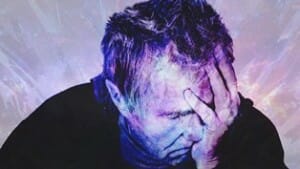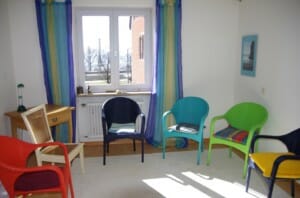Did you know that there is more than one type of bipolar disorder?
This is an important distinction, since it will determine your treatment plan, including the medications you take to manage your symptoms.
There are actually four sub-types of Bipolar Disorder, but the most common are Bipolar Type 1 and Bipolar Type 2. So, which one are you?
Are You Bipolar Type 1 or 2?
Bipolar disorder is a mood disorder that can affect anyone. It is characterized by episodes of mania and depression, though the severity of mania and depression can vary from case to case. This is the main difference between bipolar I and bipolar II.
The episodes of depression are similar in both types of disorders. This can make getting the right diagnosis difficult, especially if your first doctor visit is during one of your lows.
However, mania is different between these two types.
If you are bipolar 1, your manic episodes will be more severe. Your behavior will be considered abnormal by friends and family. With bipolar 2, your hypomania will be less severe. There is no full-fledged mania in Bipolar II Disorder, only hypomania and depressive episodes. In Bipolar II Disorder, you might exhibit behaviors that aren’t typical, but your actions won’t be seen as abnormal.
Just because mania is less severe, doesn’t mean that it can’t still be destructive and potentially debilitating. It is just as important to be treated for bipolar disorder 2 as it is for type 1.
What is Bipolar Disorder Type One?
You must have at least one episode of mania in your lifetime to be diagnosed with bipolar type one. Many people also have depressive episodes in Bipolar I Disorder, but according to the DSM V, a major depressive episode, although common in Bipolar I Disorder, is not required for the diagnosis. Some people with Bipolar I Disorder may even have a hypomanic episode followed by a full manic episode while others may experience a manic episode followed by a hypomanic episode once the manic episode has ended.
For people with Bipolar I Disorder who struggle with major depressive episodes, sometimes the depressive episode can happen just before a manic episode while other times the depression can set in after a manic episode. The illness is, without a doubt, a true roller coaster as the affected person cycles in and out of these extremes in symptoms.
If you’re constantly cycling between the highs and lows, with little or no break in between, you might want to be tested for bipolar Cyclothymia. With Cyclothymia, you have to experience symptoms for at least 2 years and have many periods whereby you have hypomanic and depressive symptoms that do not meet full criteria for a hypomanic or depressive episodes. Think of this disorder as having some symptoms, but not enough to be considered Bipolar.
Some common symptoms of bipolar 1 mania are:
- Excess energy
- Feelings of restlessness
- Difficulty concentrating
- Engaging in risky behaviors
- Trouble sleeping
- Feeling elated (euphoria)
Symptoms of mania are often disruptive, and obvious to others when they appear. If left untreated, your behaviors could have a devastating effect on your life. It can even be severe enough that hospitalization is required.
What is Bipolar Type Two?
Your depression must last for at least two weeks, and while the symptoms may be the same as in bipolar 1 your hypomania is much more mild than the manic symptoms of Bipolar I.1
Hypomania in type 2 bipolar disorder also rarely requires hospitalization.
Some of the symptoms associated with hypomania include,
- Sleeping less
- Increased energy levels
- Spending more, even if you can’t afford to
- Feelings of grandiosity
- Racing thoughts
- Rapid speech
Even though your symptoms might not be as severe, and some people even claim that they’re helpful, it is still important to have and follow a treatment plan.
Bipolar 2 is diagnosed more often than type one. It is also more common in women, especially if there is already a history of mental health problems in the family.

Depression in Bipolar 1 and 2
The signs of depression in both types of mood disorders are similar or often the same.2
Remember, symptoms of mania or hypomania must be present for a diagnosis of Bipolar Disorder.
The severity of the lows can also be the same, and this can make it difficult to get the right diagnosis initially.
A few common signs of bipolar 1 and 2 depression include,
- Loss of interest in all or most activities
- Sleeping more or less
- Significant weight loss or gain
- Loss of energy
- Lack of self-confidence
- Difficulty concentrating
- Problems making decisions
- Thoughts of death or suicide
Your depressive symptoms must be noticeable to others, and not caused by the use of drugs or alcohol.
If you’ve attempted suicide in the past or have suicidal thoughts, it is important that you tell someone. The lows can be crushing, and there is nothing to be ashamed of if you need additional help.

Treatment is Different
Even with their similarities, how the two bipolar disorders are treated and managed can be different. This is because what can help manage hypomania in type 2, could cause psychotic episodes if you have bipolar type 1.
Some of the medications commonly prescribed to treat either type of the mood disorder are,
- Mood stabilizers. These are commonly used to control episodes of mania or hypomania. Lithium, Depakene, Depakote, Tegretol, Equetro or Amical are a few examples.
- Mood-stabilizing antipsychotics. If your other medications aren’t successfully controlling your symptoms, your psychiatrist will often add an antipsychotic medication. This can include Risperdal, Abilify or Latuda, to name a few. Typically combined with a mood-stabilizer
- Antidepressants. An antidepressant can help manage depression, especially in bipolar 2 disorder. However, if you’ve been diagnosed with type one, it will need to be combined with a mood stabilizer or antipsychotic to prevent mania.
- Antidepressant-antipsychotic. The most common is Symbyax. Approved by the FDA for treating bipolar 1, it works as an antidepressant and mood stabilizer.
As you can see, just like there are differences in bipolar 1 and bipolar 2 symptoms, the medications used to treat the disorders also varies.
Antidepressants are often prescribed for type 2, but rarely for type 1. The reverse is true, regarding antidepressant-antipsychotics. They can be effective at managing bipolar 1, but are seldom prescribed for bipolar 2.

Additional Treatment Options
Medications are not the only tool you have. There are other methods that should be a part of your treatment plan, regardless of which type of the mood disorder you have.
- Psychotherapy. Cognitive behavioral therapy can be successful at identifying thoughts and behaviors that are unhealthy, and help you replace them with positive ones. There are also other types of therapy that can be beneficial, and your psychiatrist can recommend some to you.
- Substance abuse treatment. Drug and or alcohol problems are more common with the disorder than many people realize. It can seem like they ease your symptoms, but they can also prolong or worsen depression or mania. Substance abuse can also trigger an episode.
- Support programs. Support groups for bipolar disorder can be extremely helpful, and are often recommended. Creating a support network of close friends and family can also help you manage the disorder, and even prevent some manic or depressive episodes.
- Healthy lifestyle. Your lifestyle affects every aspect of your life. Getting plenty of rest, eating healthy and exercising regularly is important if you want to control your bipolar disorder. If you need help making lifestyle changes, your physician or therapist can guide you.
Living with Bipolar Type 1 and Bipolar Type 2
Even though bipolar disorder 1 differs from bipolar disorder 2, they are still similar enough that it can be difficult to tell them apart at times.
Writing down your symptoms, especially during your highs will help. Just be sure to share it with your mental healthcare provider.
If your meds are not helping or are making your symptoms worse, it might be because you are being treated for the wrong type of bipolar disorder. Be open and honest with your psychiatrist, and together you can find a treatment plan that works.
References:
1https://sciencedirect.com/science/article/pii/s0165032705004015
2https://www.ncbi.nlm.nih.gov/pubmed/12890306
 Medically reviewed by
Medically reviewed by